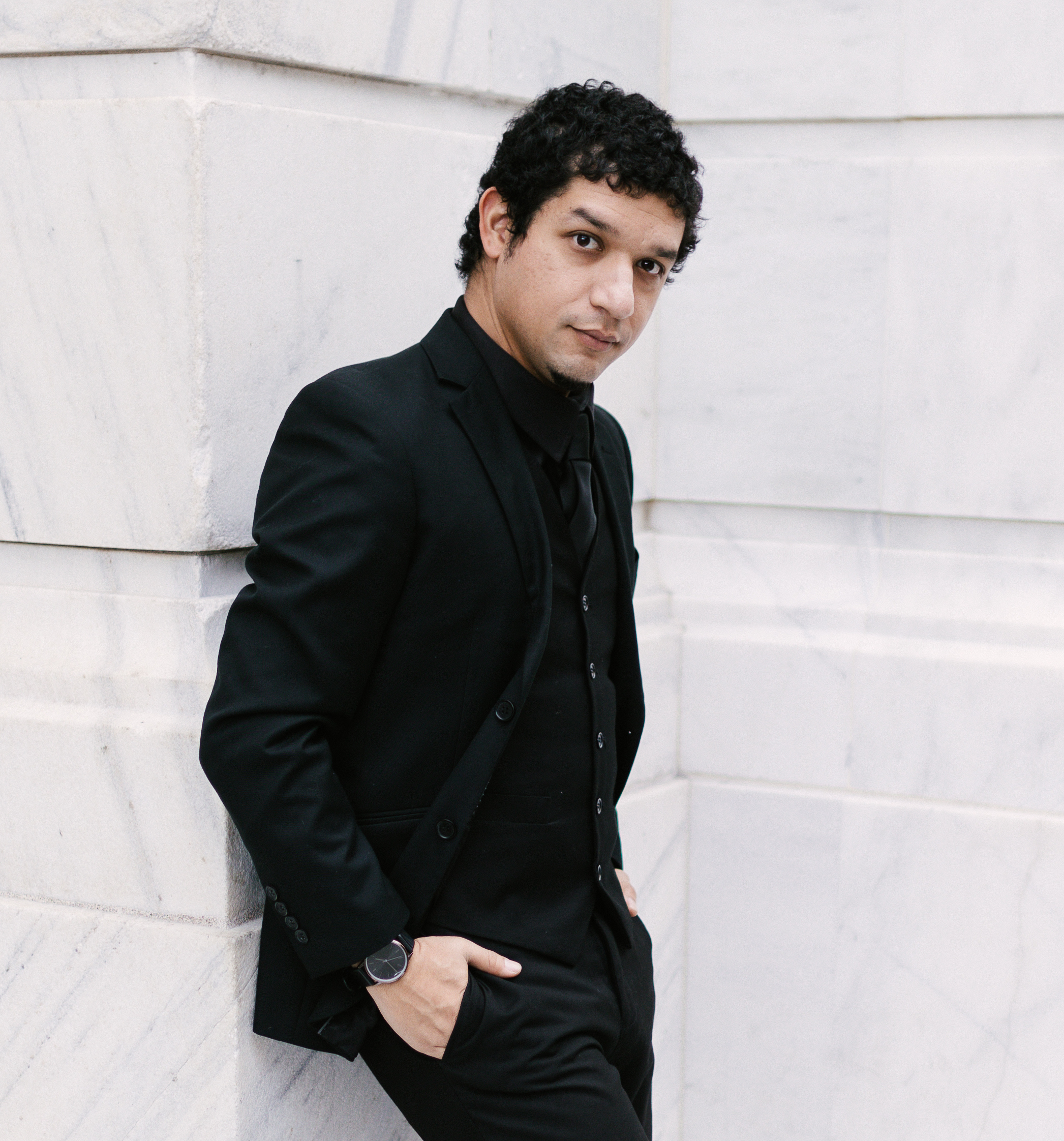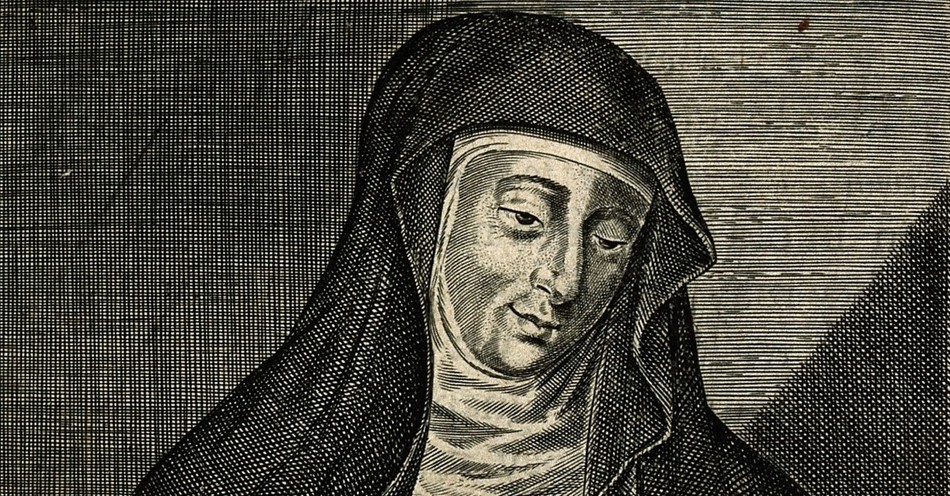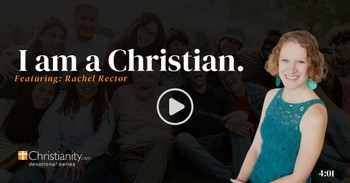Theologian. Writer. Composer. Philosopher. Mystic. Doctor. Abess. These are the many titles and qualities that apply to St. Hildegard of Bingen. While information about her remains limited to this day, her reputation and history are well-known throughout Christianity, most notably among the Roman Catholicism, Anglicans, and Lutherans in Western Europe.
How Did Hildegard of Bingen Become a Nun?
Born in the late twelfth Century, St. Hildegard of Bingen was both young (eight years old) and sick when she went to Benedictine nun Blessed Jutta Sponheim for care and education. During the medieval age in Europe, parents would have their children join monasteries and abbeys at young ages for educational and religious purposes. According to Church History, St. Hildegard is known to have had a vision around this age range. Here, St. Hildegard would receive a proper Latin education to properly chant the Psalms of Scripture, which for its time, was an exception for women. By 1136 AD, St. Hildegard was 36 and had become Mother Superior of the Abbey.
As previously mentioned, St. Hildegard was known for having incredible visions at an early age, let alone her love and devotion to God. As a result, despite not having a prior education, she became recognized for having extensive knowledge and experience in natural science, knowledge of herbs, and more. According to the writing of monks, she received information on these through her visions as she communicated with God. His popularity and reputation grew to the point where it gained the attention of Pope Eugenius III, who looked upon her with high favoritism and regard.
In her writings, St. Hildegard covers the weight of her visions at the time.
“Though I saw and heard those things, [I[ refused to write for a long time through doubt and bad reputation and the diversity of human words, not with stubbornness, but in the exercise of humility, until, laid low by the scourge of God, I fell upon a bed of sickness; then, compelled at last by many illnesses, and by the witness of a certain noble maiden of good conduct [Richardis of Stade] and of that man whom I had whom I had secretly south out [Volmar…] I set my hand to writing.”
While there were women of the church before St. Hildegard, she was well-known for preaching the Gospel and pushing for women’s education—which led Pope Egenius III to make changes that gave women more access to religious knowledge. While men continue to lead clergy duties and rites in the Roman Catholic Church, St. Hildegard’s character, gifts, and leadership opened the doors for the church to recognize the importance, value, and need for women for the sake of the Gospel, especially when it came to women supporting other women.
How Many Monastic Communities Did Hildegard of Bingen Start?
Due to her popularity, people not only came in droves to see her and speak with her but so did those with money. The monastery increased donations and payments as they took in more students while promising education, food, and shelter. It came to the point where Abbot Kuno did not want St. Hildegard or her nuns to leave, considering all of this cost money. Nonetheless, St. Hildegard followed a vision she had received about establishing a new monastery, the Benedictine Monastery of Rupertsburg. Under the new monastery, there was more freedom for them to do what need and wanted, as St. Hildegard found more time to record her visions and use her gifts of prophecy.
How Did Hildegard of Bingen Advance Medieval Science?
As previously mentioned, St. Hildegard received no prior training in her scientific knowledge and research. As an Abbess, she attended to the sick and became knowledgeable and aware of herbs and medicine. Her first herbal treatise writing, Physica, St. Hildegard, documents the properties of various plants, animals, and stones and the human body’s relation to the natural world. In the area of agriculture, she is known to have practiced a Middle Age version of what is known as biodynamic farming.
Other areas of healing and science involve the relief of irritations through lavender and wine, honey and water, and steam to help the growth and healing of lungs, which many of us use today when it comes to colds, sore throats, and breathing difficulties. These areas of science and healing were recorded Viriditas. For St. Hildegard, considering science was so young in the medieval era, it was vital to connect with God’s creation and the human body.
Mary DeJong describes how faith factored into St. Hildegard’s understanding of nature and science:
“The inherent greening energy of viriditas was foundational to Hildegard’s understanding of the Holy Spirit, the vivifying breath that animates all living things (Gen. 1:2, Ps. 104:29–30). She fostered a nature-centered pneumatology that allowed for a vibrant and immanent earthly Spirit, enfleshed, embodied, and encountered in forest, field, and flower. The garden and the whole of the great, green earth was understood to be the place where God’s Spirit and our spirit meet to produce fecundity: holistic wellness for the person and a profound mutual relationship with the natural world.
“An understanding of the sacred interconnectedness within the natural world has existed for millennia within indigenous cultures that have developed a deep respect for plants, regarding many of them as sacred couriers of well-being, health, and wisdom. Indeed, a deep love and mutuality for plants, animals, and fish both grounds and elevates the inherent web of relationships that are seen as mirrored throughout the cosmos. Hildegard’s medicinal understanding of the plant world reflected these cosmic connections, and her practice with plants was made more palpable to the Germanic population of the time through her spiritualization of the proposed cure, as rational, scientific explanations were more enduring for ordinary people if offered with a heavy dose of faith.”
What Did Hildegard of Bingen Contribute to Music?
St. Hildegard was no stranger to music. After St. Hilgard took over for Abbess Jutta in 1136 AD, she combined her knowledge of Gregorian chants with her own vibrant talents. In her lifetime, St. Hildegard composed over 70 works of music. Of these includes one of the first known musicals, Ordo Virtutum (“Plays of Virtue”).
While instruments of music were not unknown to the medieval world, St. Hildegard found much inspiration from the sound of nature. With this and more, St. Hildegard held to the belief in creativity being an inspiration for a lifestyle of focus and freedom for people’s lives, which can be known as “living light.” Before the 1970s, St. Hildegard’s music was not as well-known. Her story grew after Philip Picket rediscovered her work on the eight hundredth anniversary of her death. To this day, various Western music circles recognize and highly regard her work, from college departments to modern composers.
What Did Hildegard of Bingen Write about Religion?
Dan Graves summarizes the many things St. Hildegard wrote about Christianity, from spiritual experiences to advice for others:
“Contemporaries called her ‘Sybil of the Rhine.’ By any measure she was an extraordinary woman, one of the few who transcended the limitations on her sex during the Middle Ages to alter the events of her own time and imprint her personality on the future.
At five years of age, Hildegard of Bingen began to see visions; at eight, she joined her aunt Jutta, a recluse (one who led a solitary life for religious purposes). When fourteen she became a nun. Much of her life she was abbess of a Benedictine convent.
Somewhere along the way she acquired an education. But not until she was 42 did she begin to write the books which made her famous. Her output was prodigious and varied. She compiled an encyclopedia of natural science and clinical medicine. Her medical works included exorcisms along with much medieval lore. She wrote the first known morality play and a song cycle from which this quote is taken:
It is very hard to resist what tastes of the apple.
Set us upright Savior, Christ.... O most beautiful form!
O most sweet savor of desirable delight!
We ever sigh after you in fearful exile,
when will we see you and dwell with you?
Hildegard’s hundreds of letters of advice and rebuke went out to kings and commoners alike. She wrote biographies of two saints. This output, coming from the pen of a woman, was extraordinary in an age when women seldom learned to read. She was considered a prophetess. St. Bernard of Clairvaux and popes endorsed her visions. All listened to her.
Her book of visions, Scivias, took her ten years to complete. She incorporated 26 drawings of things she had seen in her strange waking visions. Modern medicine suggests that these shimmering lines of light were actually the auras associated with migraines. Her own account suggests more. ‘...when I was forty-two years and seven months old, heaven was opened and a fiery light of exceeding brilliance came and permeated my whole brain, and inflamed my whole heart and my whole breast, not like a burning but a warming flame, as the sun warms anything its rays touch.’ Immediately she understood the meaning of the scriptures.
At the age of 60, Hildegard began to make preaching tours. The theme of her sermons was that the church was corrupt and needed cleansing. She scathed easygoing, fat clergymen and those who were ‘lukewarm and sluggish’ in serving God’s justice, or negligent in expounding the depths of scripture.
Hildegard died at age 82 on this day, September 17, 1179. Although largely forgotten for many generations, awareness of her life surged in the mid 1990s with television programs, books and music releases devoted to her. And not without cause, for she was one of the most talented and original women of any era.”
(“Hildegard: Sybil of the Rhine” by Dan Graves, MSL, was first published on Christianity.com on May 3, 2010)
Great Books to Learn More about Hildegard of Bingen
Despite the limited knowledge about her whole life, there is a great deal to learn about St. Hildegard of Bingen. Here are some excellent books to learn more about her.
Hildegard of Bingen’s Medicine by Dr. Wighard Strehlow
Hildegard von Bingen’s Phyisca by Hildegard of Bingen, translated by Priscilla Throop
Hildegard of Bingen: Devotions, Prayers, and Living Wisdom by Mirabai Starr
Hildegard of Bingen: Scivias by Hildegard of Bingen, translated by Mother Columba Hart and Jane Bishop
Hildegard of Bingen’s Book of Divine Works: With Letters and Songs by Hildegard of Bingen, edited by Matthew Fox
Dan Graves’ Bibliography:
The Baptists. Christian History No. 6.
Deen, Edith. Great Women of the Christian Faith. New York: Harper, 1956.
Durant, Will. The Age of Faith. New York: Simon and Schuster, 1950.
Flanagan, Sabina. Hildegarde of Bingen; a Visionary Life. London; New York: Routledge, c1990.
Fuller, Thomas. “The Life of Hildegardis.” The Holy State and the Profane State Volume II. New York: Columbia University Press, 1938; p. 44ff.
Hildegard of Bingen. The Letters of Hildegard of Bingen. Translated by Joseph L. Baird and Radd K. Ehrman. New York: Oxford University Press, 1994.
“Life and Works of Hildegard von Bingen (1098 - 1179).” (www.fordham.edu/halsall/med/hildegarde.html).
Mershman, Francis. “St. Hildegard.” The Catholic Encyclopedia. New York: Robert Appleton, 1914.
Various encyclopedia and internet articles and discographies.
Last updated April, 2007.
Photo Credit: 1642 engraving by V.W. Marshall via Wikimedia Commons

This article is part of our People of Christianity catalog that features the stories, meaning, and significance of well-known people from the Bible and history. Here are some of the most popular articles for knowing important figures in Christianity:
How Did the Apostle Paul Die?
Who are the Nicolaitans in Revelation?
Who Was Deborah in the Bible?
Who Was Moses in the Bible?
King Solomon's Story in the Bible
Who Was Lot's Wife in the Bible?
Who Was Jezebel in the Bible?
Who Was the Prodigal Son?

_638919941832670018.jpg)

%20(5).jpg)
